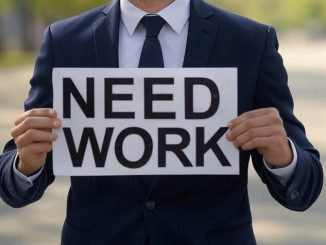The economy is getting worse more slowly. That’s just about the only clear reading that’s coming from the economic reports, including this morning’s important one on employment. The pace of job losses slowed — payrolls fell by 247,000, after a 443,000 loss in June, and the official jobless rate dropped from 9.5 to 9.4 percent.
Be careful with these figures, though. They don’t include the increasing numbers of people working part-time who’d rather have full-time jobs. Nor do they include a large number who have given up looking for work. They don’t reflect the many millions who have found new jobs that pay less than the old ones they lost. And they don’t include one of the shortest typical workweeks on record, for those who still have full-time jobs. (On this score, though, another indication that things are worsening more slowly — the workweek went up very slightly from 33 hours.) Nor, for that matter, do the numbers reflect the 130,000 people who are coming into the labor force each month ready and willing to work, who can’t find jobs.
If all these people are included, my estimate is that one out of five Americans who would otherwise be working full time are now underemployed. We are still experiencing the biggest decline of any post-World War II economic slump.
The overall economy continues to contract but more slowly than before. Consumers are not buying, exports are still dropping, and business investment is still in the doldrums, so the only clear reason is that the stimulus is beginning to kick in. Yet — here’s another important thing to watch — job losses continue to outpace that contraction. In other words, employers are using this downdraft to lay off more workers, proportionately, than they have since the Great Depression. The late economist Arthur Okun, after reviewing economic history, once pronounced a rule of thumb that every two percent drop in economic growth generates a one percent rise in unemployment. This time, that rule has been broken: The fall in growth has resulted in a much greater rise in unemployment. And if underemployment is figured in, a truly astonishing rise.
So let’s be grateful that the economy is getting worse more slowly than it was. But don’t be lured into thinking we’re ever going back to where we were. Most of the jobs that have been lost are never coming back. New ones will replace some of them, eventually, but hardly all of them. The structure of the American economy is changing. We will emerge from all this with an economy that looks strikingly different from the one we had in 2007. More on this to come.
- Bulenox: Get 45% to 91% OFF ... Use Discount Code: UNO
- Risk Our Money Not Yours | Get 50% to 90% OFF ... Use Discount Code: MMBVBKSM
Disclaimer: This page contains affiliate links. If you choose to make a purchase after clicking a link, we may receive a commission at no additional cost to you. Thank you for your support!




Leave a Reply